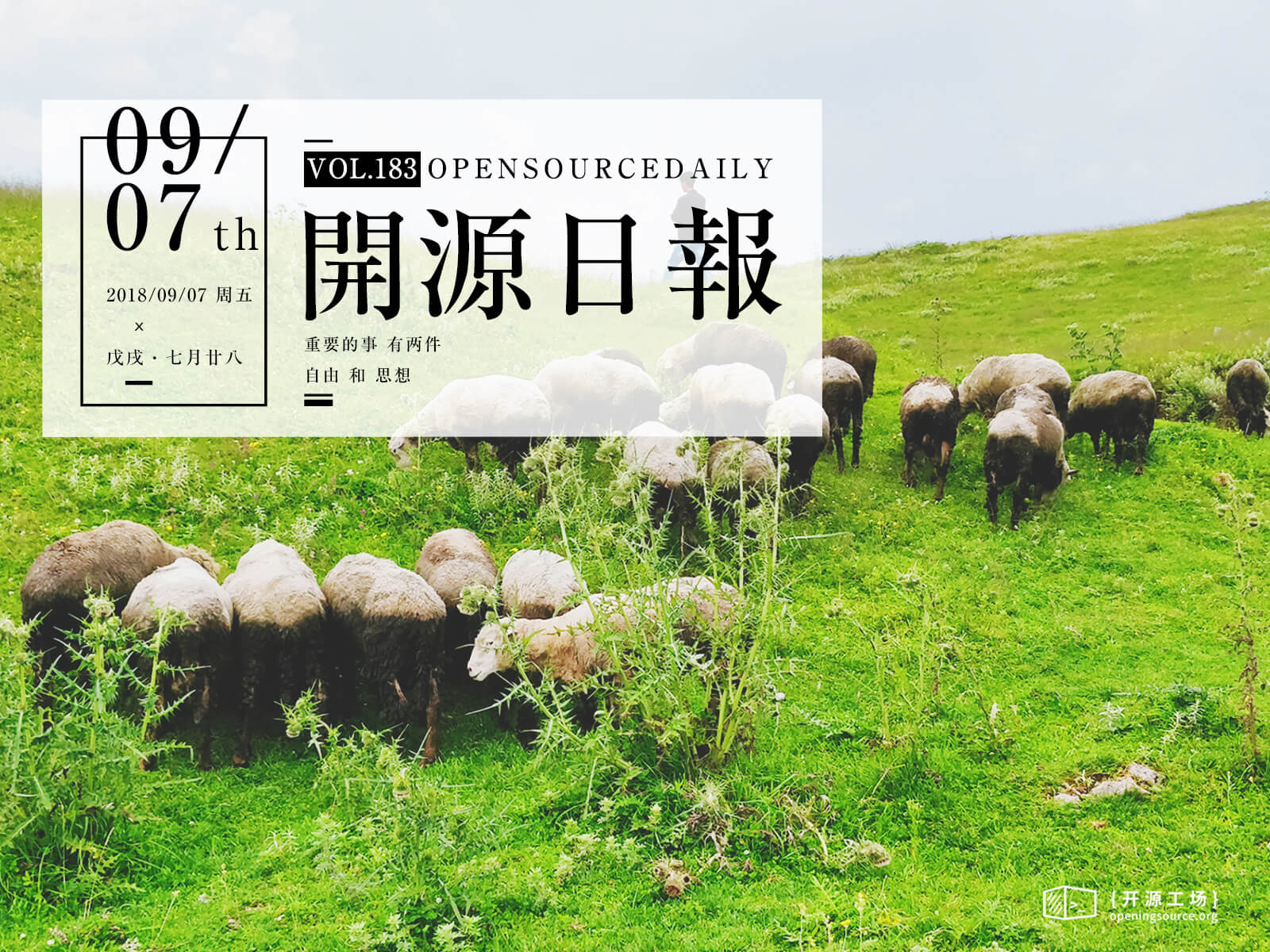每天推荐一个 GitHub 优质开源项目和一篇精选英文科技或编程文章原文,欢迎关注开源日报。交流QQ群:202790710;微博:https://weibo.com/openingsource;电报群 https://t.me/OpeningSourceOrg

今日推荐开源项目:《终端操作录制器 Terminalizer》传送门:GitHub链接
推荐理由:你应该经常在 GitHub 上的某个项目中看到一段一顿操作猛如虎的终端命令演示 Gif,大多数时候它们都用来切实的介绍某些功能,然后你手痒了,你也想给自己的项目来一段猛如虎的操作演示,然后你就需要找一个录屏软件什么的……噢!我的老伙计,我敢打赌这里有个好的令人飞天的东西可以代替那麻烦的录屏软件,我向上帝保证。你瞧瞧这有意思的小项目,它不仅能够帮你做出精巧的 Gif,还能给你提供各种各样的配置哩,比如各种主题,加水印这些,我向上帝发誓,你肯定能做出个好看的 Gif 来。
无边框版:

水印版:

今日推荐英文原文:《10 Quick Tips for Writing Great Web Content》作者:Tim King
原文链接:https://medium.com/@timkingwriter/10-quick-tips-for-writing-great-web-content-beee68b9c686
推荐理由:10个小建议,献给正在绞尽脑汁想办法给网站上增添文章的你
10 Quick Tips for Writing Great Web Content
Writing content for the web is very different that writing a business paper, technical document or essay. Getting it right can take time and effort but can make all the difference. It can often be the dividing line between deeply engaging with an individual or causing them to become disinterested in your information.
Below are a few tips to help you shape your content to better engage and inform, while still conveying your key message.
Understand How Users Read on the Web
Users read differently on the web, unlike when they are reading a book from cover to cover.
On the web, users don’t read word for word. They skim content, trying to get a quick impression of what it’s about. They scan for the bits they are interested in and ignore the rest unless highly engaged.
You need to understand how users read on the web, then write content in a style that makes it easy for them.
Know Your Audience
Who are you are writing for? What are their needs? What will they come to your web page to find or achieve? What is their level of expertise? Build a profile of your various audience groups. Focus your content around your users’ needs and tasks, not around yourself or your organisation.
Embrace user-centric content writing.
Write Content that is Easy to Skim & Scan
- Be direct
- Limit each paragraph to one key concept
- Use meaningful headings
- Use bullet points and numbered lists
- Include summaries or overviews
Keep Your Wording Short & Simple
Be brief and concise. Reduce your word-count to a minimum. Write clearly and simply. If you are writing for an expert audience explain your terms. Provide easy ways for non-experts to find out what your acronyms and difficult expressions mean. Give your users links to simple background information, so that the most casual visitor can work out what you are talking about.
Put Your Most Important Information First
Information that’s most important to your web visitors is often a simple statement of what you do. Once they understand what you do, they might want to know some important details. And then, maybe they’d like to know some background information.
Write in Common Language
We think we know what SMS means but what if there is more than one meaning for SMS?
Always use words that users will effortlessly understand. You don’t need bombastic and fanciful words to impress people. You’ll impress people when you use simple words to get a complicated idea across.
Make Your Copy Easy to Read
- Use short paragraphs — four sentences maximum
- Use short sentences — twelve words on average
- Skip unnecessary words
- Avoid jargon and overly technical terms
- Avoid the passive tense
- Avoid needless repetition
- Address your web visitors directly. Use the words you and your
- Shorten your text
Test then Refine Your Content
First test it yourself. Review each web page or article while imagining how it reads to a new user.
Test it on users to learn what works and what causes difficulties.
Test your content on different audience groups with different levels of knowledge.
Test web page performance in all common browsers. Test, refine, test, refine, test …
You get the idea.
Build Trust
- Be factual and accurate
- Include only content which conforms to the purpose
- Protect privacy and respect copyright
- Keep your content up to date
- Publish your contact details. Provide users with a sense of knowing who is behind the content
- Spell-check your content
- Invite people to report errors, then fix them
Make Users Act Without Saying “Click Here”
The challenge is to make your links communicate “click here” without actually saying “click here,” and there are many ways to do this. It will take some thought and effort on your part, but in the end, users will benefit with a better experience.
A great way to do this is to add links to the relevant words and phrases within your content. This way the link remains contextually relevant, and you avoid the notorious “Click Here”.
每天推荐一个 GitHub 优质开源项目和一篇精选英文科技或编程文章原文,欢迎关注开源日报。交流QQ群:202790710;微博:https://weibo.com/openingsource;电报群 https://t.me/OpeningSourceOrg
